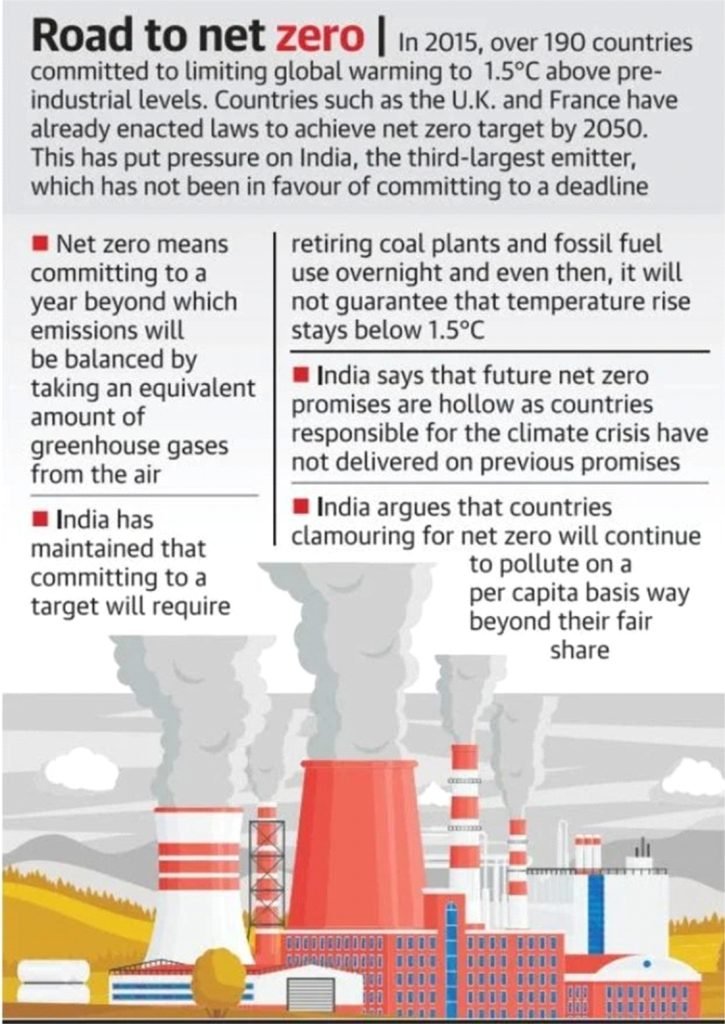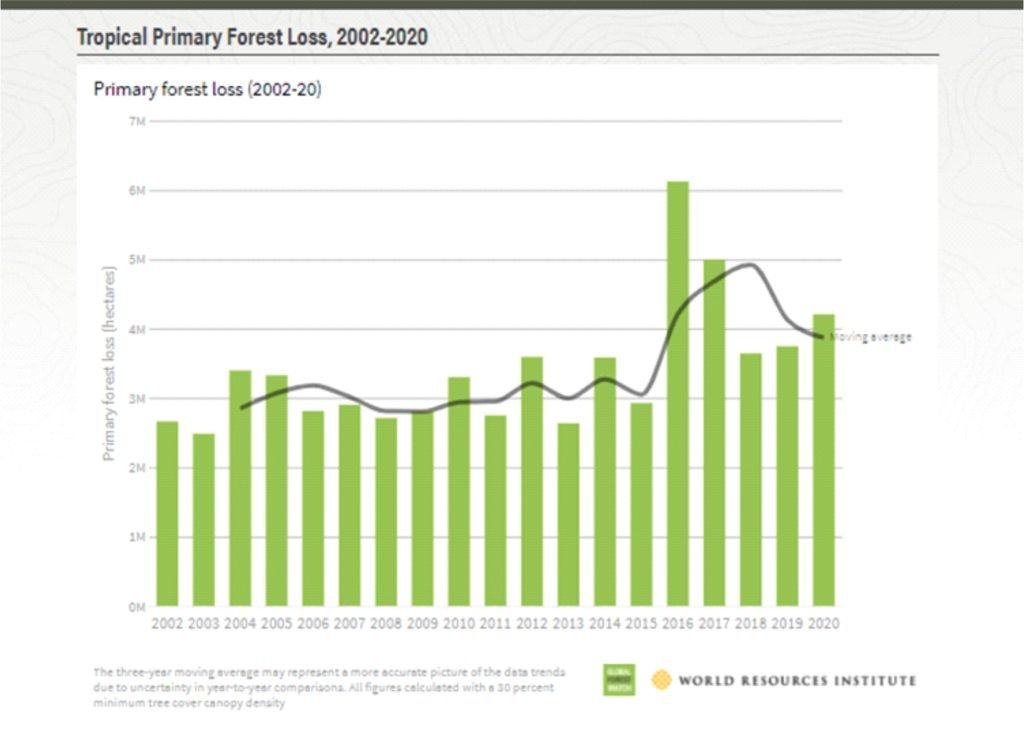Global Methane Pledge
Indian Express, The Hindu
GS 3: Environment and Conservation
Context:
- The Global Methane Pledge was launched recently at the ongoing UN COP26 climate conference in Glasgow.
- So far, over 90 countries have signed this pledge, which is an effort led jointly by the United States and the European Union.

About:
- Methane is the second-most abundant greenhouse gas in the atmosphere, after carbon dioxide, and, therefore, pledges related to cutting down its emissions are significant.
- The pledge was first announced in September by the US and EU, and is essentially an agreement to reduce global methane emissions.
- One of the central aims of this agreement is to cut down methane emissions by up to 30% from 2020 levels by the year 2030.
- According to the latest Intergovernmental Panel on Climate Change report, methane accounts for about half of the 1.0 degrees Celsius net rise in global average temperature since the pre-industrial era.
- Rapidly reducing methane emissions is complementary to action on carbon dioxide and other greenhouse gases, and is regarded as the single most effective strategy to reduce global warming in the near term and keep the goal of limiting warming to 1.5 degrees Celsius within reach.
What is methane?
- According to the UN, 25% of the warming that the world is experiencing today is because of methane, a greenhouse gas, which is also a component of natural gas. Because it is a greenhouse gas, its presence in the atmosphere increases Earth’s temperature.
- There are various sources of methane including human and natural sources. Human sources of methane include landfills, oil and natural gas systems, agricultural activities, coal mining, wastewater treatment, and certain industrial processes.
- The oil and gas sectors are among the largest contributors to human sources of methane. NASA notes that human sources (also referred to as anthropogenic sources) of methane are responsible for 60% of global methane emissions.
- These emissions come primarily from the burning of fossil fuels, decomposition in landfills and the agriculture sector.
- In India, for instance, in 2019, the Ministry of Coal asked state-run coal miner Coal India Limited (CIL) to produce 2 MMSCB (million metric standard cubic metres) per day of coalbed methane (CBM) gas in the next 2 to 3 years.
- CBM, like shale gas, is extracted from what are known as unconventional gas reservoirs — where gas is extracted directly from the rock that is the source of the gas (shale in case of shale gas and coal in case of CBM).
- The methane is held underground within the coal and is extracted by drilling into the coal seam and removing the groundwater. The resulting drop in pressure causes the methane to be released from the coal.

Why is dealing with methane important for climate change?
- According to the International Energy Agency (IEA), while methane has a much shorter atmospheric lifetime (12 years as compared to centuries for CO2), it is a much more potent greenhouse gas simply because it absorbs more energy while it is in the atmosphere.
- In its factsheet on methane, the UN notes that methane is a powerful pollutant and has a global warming potential that is 80 times greater than carbon dioxide, about 20 years after it has been released into the atmosphere.
- Significantly, the average methane leak rate of 2.3% “erodes much of the climate advantage gas has over coal”.
- The IEA has also said that more than 75% of methane emissions can be mitigated with the technology that exists today, and that up to 40% of this can be done at no additional costs.
Lost forests
- In 2020, the world lost 258,000 sq km (100,000 sq miles) of forest — an area larger than the United Kingdom, according to WRI’s Global Forest Watch.

- The conservation charity WWF estimates that 27 football fields of forest are lost every minute.
- More than 100 national leaders pledged to halt and reverse deforestation and land degradation by the end of the decade, underpinned by $19 billion in public and private funds to invest in protecting and restoring forests.
- The agreement vastly expands a commitment made by 40 countries as part of the 2014 New York Declaration of Forests, and promises more resources.
- CoP26 aims to keep alive a receding target of capping global warming at 1.5 degrees Celsius (2.7 Fahrenheit) above pre-industrial levels to avert still greater damage from the intensified heatwaves, droughts, storms, floods and coastal damage that climate change is already causing.
- Under the agreement, 12 countries pledged to provide $12billion of public funding between 2021 and 2025 for developing countries to restore degraded land and tackle wildfires.
- At least $7.2 billion will come from private sector investors representing $8.7 trillion in assets under management,who also pledged to stop investing in activities linked to deforestation such as cattle, palm oil and soybean farming and pulp production.
- India for the first time set out a target date for India, heavily reliant on coal, to reduce its carbon emissions to a level it can absorb, albeit only in 2070 -20 years beyond the U.N.’s global recommendation.

Ayushmaan CAPF
News on air
Prelims Fact
Context:
- Home Minister launched the ‘Ayushmaan CAPF’ Scheme health cards at the national level.
About:
- The Home Minister launched the scheme by handing over the Ayushmaan card to a personnel.
- He also handed over ‘Ayushmaan CAPF’ Scheme health cards to the Director General, National Security Guard, NSG for distribution to NSG personnel.
- The scheme has been designed to cover all serving personnel and their dependents of the seven Central Armed Police Forces.
- The process of distribution of health cards across Central Armed Police Forces, CAPFs began on the auspicious occasion of Dhanvantri Pooja.
- The health card distribution will be undertaken in all CAPFs and the number of cards distributed will be displayed on the website of Home Ministry on a daily basis. The distribution of about 35 lakh cards will be completed by December this year.
- The Home Minister had launched ‘Ayushmaan CAPF’ Scheme on pilot basis in the State of Assam on 23rd of January this year to provide health care services to all Central Armed Police Force (CAPFs) personnel and their dependents.
- The scheme is a joint initiative of the Home Ministry, Health Ministry and National Health Authority (NHA).

Deepening Divides
The Hindu
GS 1: Social Issues
Context:
- As almost 26 crore children return to physical classes after 18 months of school closures, a business as usual approach will lead to a deepening of existing educational inequity, warned the National Coalition on the Education Emergency (NCEE) in A Future At Stake – Guidelines and Principles to Resume and Renew Education report.

About:
- The NCEE cited data from the recent SCHOOL survey conducted in 15 States, which showed that 72% of elementary age children did not do any regular studying by any method during the lockdown, with only 8% of rural children able to access online classes.
- An NCEE survey of teachers in a sample of Karnataka schools found that 85% of Class 8 teachers thought that most of their students were not at their grade level in mathematics and language. Three-fourths of Class 10 teachers agreed.
- The worst affected are children of the rural and urban poor, migrants, minorities, Dalit, adivasi and other backward communities, many of whose families faced a health and livelihood crisis during the lockdown apart from a lack of educational access.
- There needs to be a focus on children’s mental health and self-esteem before anything else.
- This report suggests specific ways to bring children back to school, communicate with parents and teachers and processes to support the most disadvantaged.
- Till lower secondary level, curriculum need to be redesigned with a focus on socio-emotional development, language and maths skills.
Warming Trends Impact on Wheat
Down to Earth
GS 3: Agriculture, Environment
Context:
- According to the study published in Nature Food, global maize yield could decline 24% while wheat would increase 17% by 2030 if the world warms like it is doing now
- The study was led by a team of researchers from International Institute for Applied Systems Analysis (IIASA), National Aeronautics and Space Administration (NASA) and the Potsdam Institute for Climate Impact Research.
About:
- The cultivation of wheat, among the three most consumed crops in the world, could expand to higher latitudes by 2030, increasing its global yield, if global warming trends continue.
- Higher levels of carbon dioxide in the atmosphere will have a positive effect on the growth of wheat.
- However, the nutritional value of such wheat would be reduced. Also, the increase in global wheat yield could level off by 2050.
- Wheat yield would increase 17% by 2030. On the other hand, global maize yield would decline 24%. It would be more difficult to grow maize in the tropics.
- North and central America, west Africa, central Asia, Brazil and China will potentially see their maize yields decline in the coming years and beyond as average temperatures rise across these breadbasket regions, putting more stress on the plants.
- Human-made greenhouse gas emissions bring higher temperatures, shifts in rainfall patterns and more carbon dioxide in the air. This affects crop growth and we find that the emergence of the climate change signal — the time when extraordinary years become the norm — will occur within the next decade or soon after in many key breadbasket regions globally.
- Farmers need to adapt much faster by changing the planting dates and using different crop varieties to avoid severe losses.

